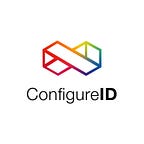What Is Product Customization, and Why Is It Important in the Modern Ecommerce Landscape? — ConfigureID
A New Kind of Connection
Customizable products give brands an opportunity to connect with their customers as co-creators, which generates customer loyalty as well as higher margins. Product customization ranges from visualizing related stock products together (like an outfit builder) to custom-designing products that are individually manufactured on demand.
Terminology: Customization Versus Configuration
Product customization and product configuration refer to the same thing: empowering consumers to create the product they want. Customization and configuration are synonyms in this context and will be used interchangeably in this article.
Why Would Brands Want to Offer Customizable Products?
Ecommerce is becoming increasingly commoditized, with price frequently determining purchasing decisions. The volume of products being sold on Amazon and at Walmart depresses margins for all retailers.
Customized products are a differentiator that disrupts this cycle. The products themselves are unique, as is the process of designing them. Brands offer customizable products through a specialized user experience that presents the available options along with rules that govern them. A well-executed customization user experience is engaging and inspiring. Consumers feel empowered by the co-creation process, and develop an emotional connection with the brand.
Brands offering customizable products benefit from this bond with the consumer. First, consumers feel loyalty to the brand since they enjoy the experience itself as well as the outcome of purchasing a uniquely personalized product. Second, since consumers are unable to purchase these products elsewhere, brands are able to charge a premium. Research done in 2019 by Astound Commerce shows that 95% of consumers are willing to pay more for customized products, and 72% are comfortable spending at least 10% more.
What Are Customizable Products, Exactly?
Product customization is a broad term that encompasses the creation of products specifically for individual consumers. While these custom products don’t all have to literally be unique, they do need to have the potential to be unique. There are three general types of product customization.
Product bundling
Product bundling refers to selling related stock products in a cohesive shopping experience. At first glance, the bundling of stock products may not appear to be product customization since it does not involve custom manufacturing but it offers many of the same advantages. Consider the Young’s Hire Suit configurator as an example.
Generally, none of the components in a suit configurator like this one are actually custom made; all are likely to be standard stock products. Nevertheless, the consumer is able to choose the details of each of the related products, and is also able to visualize them together. The large number of possible permutations makes the consumer feel as though they are designing a custom suit.
Of course, one of the major advantages of product bundling is that it does not require the manufacture of custom products. No factory retrofits are necessary, nor are changes to existing fulfillment processes. Product bundling can be a way to test the product configuration waters without any investment in facilities or process changes.
Product bundling is an effective solution for any domain where related products can be visualized together. Some examples include bedding, table settings, desk accessories, furniture, and ski equipment. For example, it is more engaging to choose sheets, pillowcases, duvets, and blankets when you can see them all together.
Personalization
Personalized products are embellished standard stock products that are customized in a way that does not require sophisticated manufacturing facilities. Examples would be embroidering user-specified text, sewing a patch, or printing an uploaded photograph on a standard pre-manufactured product. This level of personalization can easily be performed quickly in a warehouse or store with the proper equipment.
Ralph Lauren’s custom Women’s Polo Shirt is a good example of personalization.
The style, fit, color, and size selections in the configurator all lead to the selection of a standard pre-manufactured Polo shirt. The remaining selections (logos, monograms, flags, etc.) are embroidered on the standard shirt after the purchase is complete.
Louis Vuitton’s personalized handbags offer another example of personalization on a global scale. This unique experience allows you to personalize your Louis Vuitton handbag with your favorite stripes, patches, colors, and even add your initials.
Made to Order
Made to order products are individually manufactured to the specifications of the consumer, allowing them to make aesthetic choices like materials, colors, and patterns. The Franklin Sports custom batting glove configurator demonstrates extreme aesthetic freedom, supporting trillions of different permutations of batting gloves.
The Franklin Sports batting glove configurator also offers the added benefit of displaying the customized products in 3D using WebGL technology. This makes the online shopping experience highly interactive and almost tactile.
Made to order product customization can also involve functional choices as illustrated by Fender’s Mod Shop configurator, which lets musicians choose their fingerboard, pickups, tuning machines, bridge, and strings to build their dream guitar. Of course, you can also make your guitar look exactly like you want.
Conclusion
Product customization and personalization provide many benefits to brands, including higher margins and improved customer loyalty. The customization of products ranges from the selection and visualization of related products with each other to custom-manufactured products.
Stay tuned for future articles explaining how to harness the potential of product customization for your business.
Originally published at https://configureid.com on March 17, 2020.
